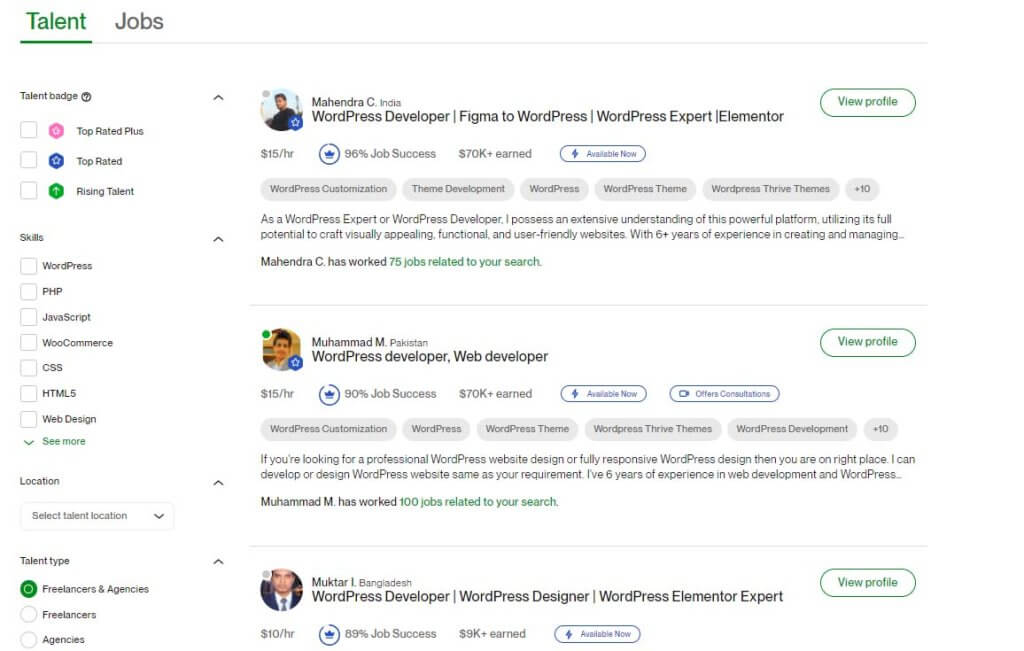With over 810 million websites utilizing WordPress by 2023, commanding 43% of the market, competitors like Shopify and Squarespace pale in comparison.

WordPress themes are pivotal, driving a thriving market for high-quality designs. Entrepreneurs are eager to invest in polished themes and plugins to expedite website setup. However, navigating theme development and marketing can be daunting.
Fear not – with the right guidance, success is within reach. In this article, we'll unveil key strategies to promote and sell your WordPress theme, empowering you to tap into this lucrative market.
Importance Of Developing a WP Theme
Understanding the ins and outs of WordPress theme development is essential if you're looking to sell themes. For beginners, online resources like Udemy and Skillshare offer a plethora of courses to kickstart your journey. However, starting from scratch may mean a considerable time investment before crafting your premium theme.
Create Amazing Websites
With the best free page builder Elementor
Start NowAlternatively, hiring seasoned developers through platforms like Upwork can expedite the process. Prioritize those with extensive WordPress experience and positive client feedback.

Consider these tips when selecting a developer:
- Don't solely focus on the lowest hourly rate, as complex projects demand efficiency. Opting for a more experienced developer may ultimately save you time and money.
- Look for candidates with a substantial portfolio and track record, indicating a reliable partnership.
- Request examples of their work, ensuring they possess the skills and quality you seek through thorough testing and examination.
Finding the right developer requires a balance of expertise, reliability, and alignment with your vision. Trust your instincts in making the best choice for your WordPress theme venture.
What Type Of Theme You Should Promote?
Choosing the right niche for your WordPress theme is essential for attracting potential buyers.
Start by exploring popular marketplaces like Themeforest to identify gaps or underserved industries. For instance, if you notice a scarcity of themes catering to pet groomers or spas, seize the opportunity to fill that void.
Understanding the specific needs and requirements of your chosen niche is crucial. For example, if you're designing a theme for a pet spa, you'll need features like a menu for spa treatments, a page for customer testimonials, a booking system, and a contact form.
Moreover, ensure that your demo website showcases all these elements effectively. Providing potential buyers with a clear visualization of what their website could look like with your theme will significantly increase their interest and likelihood of making a purchase.
How To Set The Pricing For WordPress Theme?
Deciding on the price for your theme is a bit like finding the perfect balance. You've got a wide range to work with, anywhere from $20 to $200. But landing on the right number isn't just about plucking one out of thin air – it's a strategic move that can make or break your theme's success.
To start, take a peek at what other themes in your niche are going for. It's like window shopping in the marketplace. If most pet grooming themes are tagged at $75 and you're thinking of aiming higher at $200, it might be time to reconsider.
Your price should match up with what your theme brings to the table. Think about what makes yours special – maybe it's extra features, a super sleek design, or top-notch usability. And consider how crowded the market is – are you one of the few or are there tons of other themes vying for attention?
When it comes to how you sell your theme, there's more than one path to choose from. You could go for a one-time sale or set up a subscription model. But whichever route you take, make sure you're giving your customers enough value for their money and keeping up with the competition.
How To Promote WordPress Theme?
Marketing a WordPress theme involves various strategies aimed at increasing visibility, attracting potential buyers, and driving sales. Here are some effective ways to market a WordPress theme:

- Create a Compelling Website: Develop a dedicated website or landing page for your theme. Showcase its features, customization options, and benefits. Include demo versions or screenshots to give users a preview of the theme's appearance and functionality.
- Optimize for Search Engines (SEO): Implement SEO best practices to improve your theme's visibility in search engine results. Use relevant keywords in your website content, meta descriptions, and headings. Publish blog posts or tutorials related to WordPress themes to attract organic traffic.
- Utilize Social Media: Leverage social media platforms such as Twitter, Facebook, Instagram, and LinkedIn to promote your theme. Share engaging content, including visual assets, videos, and customer testimonials. Participate in relevant conversations and communities to increase brand awareness.
- Offer Freebies or Trials: Provide free versions or trial periods of your theme to allow users to experience its functionality firsthand. This can help build trust and encourage users to upgrade to the premium version for additional features and support.
- Collaborate with Influencers: Partner with influential bloggers, YouTubers, or industry experts who cater to your target audience. They can review your theme, create tutorials, or endorse it to their followers, expanding your reach and credibility.
- Engage with Online Communities: Join forums, discussion groups, and online communities related to WordPress and web design. Contribute valuable insights, offer support, and share updates about your theme. Building relationships within these communities can lead to word-of-mouth referrals and positive reviews.
- Run Paid Advertising Campaigns: Invest in paid advertising on platforms like Google Ads, Facebook Ads, or LinkedIn Ads to reach a larger audience. Target specific demographics, interests, or geographic locations to maximize the effectiveness of your campaigns.
- Provide Excellent Customer Support: Offer responsive and knowledgeable customer support to users who purchase your theme. Address their inquiries promptly, provide detailed documentation, and offer assistance with customization or troubleshooting.
- Optimize Pricing and Packaging: Determine the optimal pricing strategy for your theme based on its features, uniqueness, and target market. Consider offering discounts, bundles, or subscription options to appeal to different customer segments.
- Monitor and Analyze Performance: Track key metrics such as website traffic, conversion rates, and customer feedback to evaluate the effectiveness of your marketing efforts. Adjust your strategies accordingly to optimize results and drive continuous improvement.
By implementing these marketing strategies effectively, you can increase awareness, attract potential buyers, and generate sales for your WordPress theme.
Sales Option For Your WordPress Theme
When it comes to selling your WordPress theme, you have several options to consider. Here are some common sales options for WordPress themes:
- Marketplaces: List your theme on popular WordPress theme marketplaces such as ThemeForest, Mojo Marketplace, or Creative Market. These platforms provide a large audience of potential buyers and handle the transaction process for you.
- Your Own Website: Sell your theme directly through your own website or e-commerce platform. This gives you more control over pricing, branding, and customer relationships. You can use plugins like Easy Digital Downloads or WooCommerce to set up a storefront and manage sales.
- Subscription Services: Offer your theme as part of a subscription service, where users pay a recurring fee for access to multiple themes or ongoing updates and support. This can provide a steady stream of revenue and encourage long-term customer relationships.
- Affiliate Programs: Set up an affiliate program to incentivize others to promote and sell your theme on your behalf. Affiliates earn a commission for each sale they generate, helping you reach a wider audience and increase sales.
- Freemium Model: Offer a free version of your theme with limited features, and upsell users to a premium version with additional functionality or support. This can attract more users initially and convert them into paying customers over time.
- Bundle Deals: Partner with other theme developers or plugin creators to offer bundle deals that include multiple products at a discounted price. This can increase the perceived value of your theme and attract buyers looking for comprehensive solutions.
- Custom Development: Offer custom theme development services for clients who require unique designs or tailored solutions. This can be a lucrative option for targeting businesses or individuals with specific requirements.
- White Labeling: Allow other developers or agencies to rebrand and resell your theme under their own name. This can expand your reach and generate additional revenue streams without the need for extensive marketing efforts.
Consider your target audience, pricing strategy, and business goals when choosing the sales option that best fits your WordPress theme. Experiment with different approaches to find the one that maximizes your sales and profitability.
Wrapping Up
Creating and selling a WordPress theme might sound daunting, but trust me, it's doable! With the right guidance and a solid strategy for promoting your theme, you can carve out your spot in the market.
Start by diving deep into your niche – understand what makes your target audience tick. Then, when it comes to pricing your theme, be smart about it. You want to offer value without breaking the bank. And once you've got your theme out there, don't forget about customer support. It's key to keeping your users happy and coming back for more.





